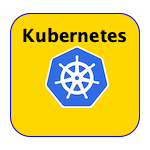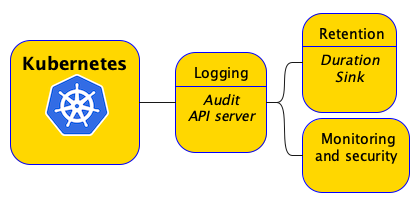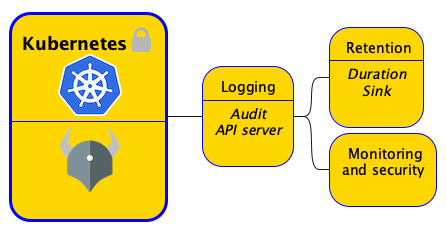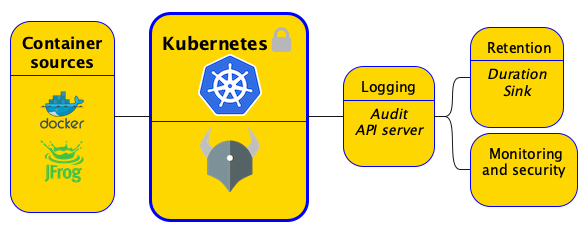EDIT: Grammatical errors fixed.
It's a trap
Admiral Ackbar
For those who have gotten into the world of Kubernetes tooling, kubectl remains an essential and perhaps underrated tool, not just in its usage but in how it can inform us even when we are not using it directly (like in a bash script) but also in what it can teach us about how to use it to as a guide to when making calls to the Kubernetes API server. The first in this series of articles entry is not a beginner-level entry but it will surely set the tone for more articles down the line.
kubectl ... --v=9 is the Kubernetes developer's underrated friend - it reveals much about which Kubernetes API server endpoints are being called, with what parameters and the actual HTTP requests to and responses from the API server.kubectl transforms the actual JSON/YAML used when creating or editing Kubernetes resources and likewise when fetching Kubernetes resources and displaying them, in unexpected ways and the only good way to observe these differences is by increasing the verbosity of the output. What I am saying is that what kubectl displays is not necessarily what the API server served up.
Have you ever tried to, say get a list of all resources of a kind in a namespace? Say you would like to get a list of all ConfigMaps in a namespace.
Suppose I have 2 ConfigMaps in a namespace, the first of which is
apiVersion: v1
data:
hello: world
yoda: do or do not. There is no try
kind: ConfigMap
metadata:
labels:
app: blog
name: hello-world
and the second of which is
apiVersion: v1
data:
palpatine: There is a great disturbance in the force
vader: I find your lack of faith disturbing
kind: ConfigMap
metadata:
labels:
app: blog
name: sithisms
and we kubectl apply both of these to a namespace list-resources-ns to create them.
Note the .metadata.labels in both ConfigMaps : app: blog
Once the ConfigMaps have been created, let us fetch both of them simultaneously from the cluster by selecting them using the labels we applied to them app: blog.
kubectl get configmap --selector app=blog -n list-resources-ns
which gives us the output
NAME DATA AGE
hello-world 2 25m
sithisms 2 22m
but now if we change the command above to
kubectl get configmap --selector app=blog -n list-resources-ns -oyaml
we get something like this (.resourceVersion, .creationTimestamp values and the like not withstanding, those would vary in your case)
yaml
apiVersion: v1
items:
- apiVersion: v1
data:
hello: world
yoda: do or do not. There is no try
kind: ConfigMap
metadata:
creationTimestamp: "2024-06-30T17:46:35Z"
labels:
app: blog
name: hello-world
namespace: list-resources-ns
resourceVersion: "11757"
uid: 01c03ca8-da39-44ba-991b-7dc4818440cd
- apiVersion: v1
data:
palpatine: There is a great disturbance in the force
vader: I find your lack of faith disturbing
kind: ConfigMap
metadata:
creationTimestamp: "2024-06-30T17:49:39Z"
labels:
app: blog
name: sithisms
namespace: list-resources-ns
resourceVersion: "11806"
uid: 81f99d38-3de8-460f-911f-0d954f165ed1
kind: List
metadata:
resourceVersion: ""
So far no surprises. Except for what is going on behind the scenes.
- First of all, unsurprisingly,
kubectl is issuing an HTTP GET to the Kubernetes API server. In fact the GET is issued to the relative URL /api/v1/namespaces/list-resources-ns/configmaps?labelSelector=app%3Dblog&limit=500
- Secondly, the API server is returning not a YAML but JSON and
kubectl converts the JSON to a YAML. This shouldn't surprise most devs: YAML is better suited to configuration files but JSON is better suited for transporting data compared to YAML since YAML is pretty finicky about indentation. So, kubectl converts the JSON to a YAML before showing you the output.
- Thirdly, and this might surprise many, you would expect that the API server returns the JSON-equivalent of the above YAML to have been returned.
{
"apiVersion": "v1",
"items": [
{
"apiVersion": "v1",
"data": {
"hello": "world",
"yoda": "do or do not. There is no try"
},
"kind": "ConfigMap",
"metadata": {
"creationTimestamp": "2024-06-30T17:46:35Z",
"labels": {
"app": "blog"
},
"name": "hello-world",
"namespace": "list-resources-ns",
"resourceVersion": "11757",
"uid": "01c03ca8-da39-44ba-991b-7dc4818440cd"
}
},
{
"apiVersion": "v1",
"data": {
"palpatine": "There is a great disturbance in the force",
"vader": "I find your lack of faith disturbing"
},
"kind": "ConfigMap",
"metadata": {
"creationTimestamp": "2024-06-30T17:49:39Z",
"labels": {
"app": "blog"
},
"name": "sithisms",
"namespace": "list-resources-ns",
"resourceVersion": "11806",
"uid": "81f99d38-3de8-460f-911f-0d954f165ed1"
}
}
],
"kind": "List",
"metadata": {
"resourceVersion": ""
}
}
except that what the API server actually returns is
{
"kind": "ConfigMapList",
"apiVersion": "v1",
"metadata": {
"resourceVersion": "15095"
},
"items": [
{
"metadata": {
"name": "hello-world",
"namespace": "list-resources-ns",
"uid": "01c03ca8-da39-44ba-991b-7dc4818440cd",
"resourceVersion": "11757",
"creationTimestamp": "2024-06-30T17:46:35Z",
"labels": {
"app": "blog"
},
"managedFields": [
{
"manager": "kubectl-create",
"operation": "Update",
"apiVersion": "v1",
"time": "2024-06-30T17:46:35Z",
"fieldsType": "FieldsV1",
"fieldsV1": {
"f:data": {
".": {},
"f:hello": {},
"f:yoda": {}
}
}
}
]
},
"data": {
"hello": "world",
"yoda": "do or do not. There is no try"
}
},
{
"metadata": {
"name": "sithisms",
"namespace": "list-resources-ns",
"uid": "81f99d38-3de8-460f-911f-0d954f165ed1",
"resourceVersion": "11806",
"creationTimestamp": "2024-06-30T17:49:39Z",
"labels": {
"app": "blog"
},
"managedFields": [
{
"manager": "kubectl-create",
"operation": "Update",
"apiVersion": "v1",
"time": "2024-06-30T17:49:39Z",
"fieldsType": "FieldsV1",
"fieldsV1": {
"f:data": {
".": {},
"f:vader": {}
}
}
}
]
},
"data": {
"palpatine": "There is a great disturbance in the force",
"vader": "I find your lack of faith disturbing"
}
}
]
}
Don't believe me? Try issuing the following
kubectl get cm --selector app=blog -ojson --v=9
The differences are many and profound. Here they are in tabular form.
| Differences |
As printed by kubectl |
As sent by API server |
| .kind |
List |
ConfigMapList |
| .items[*].kind |
ConfigMap |
Field absent |
| .items[*].metadata.managedFields |
Field absent |
Field present |
Now, why does this matter? It may not matter most of the times except when you are a dev creating a client-side tool, either using one of the officially supported kubernetes client libraries or maybe just use curl or any number of HTTP libraries; and you are looking to parse the JSON returned by the API server, you could easily be flummoxed as I was.
I was using the Kubernetes Python client library to fetch a set of secrets in a cluster, checking if the data in each secret was valid and updating only the secrets that needed to be updated and then updating the secrets to the cluster.
Except the client kept insisting that apiVersion was absent and kind had not been set in the Secrets object. It was not until I pulled up kubectl and did a kubectl get --selector ... --v=9 that I realized what had gone wrong and the Secret objects - in the Python client it is called the V1Secret class - was indeed incomplete because I had constructed the V1Secret objects directly from the .items[*] JSON-objects and they did not have .kind and .apiVersion set.




